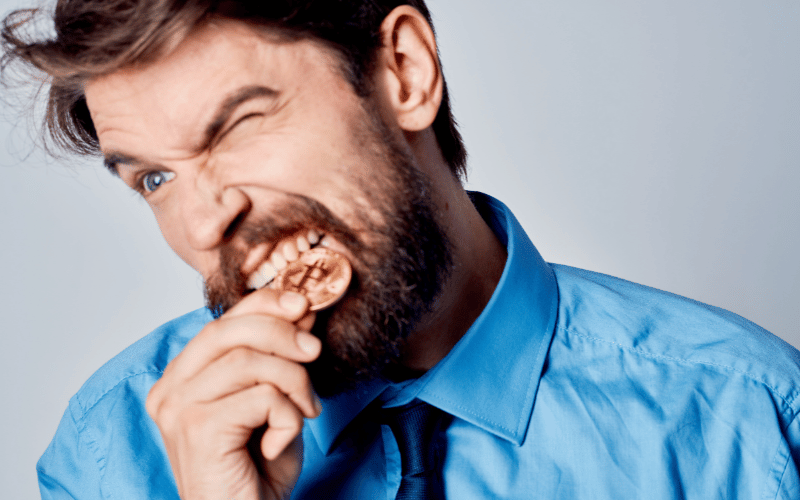Symptom 7: Changes in Bite

Our bite, or the way our upper and lower teeth come together, is something we seldom consciously think about. Yet, for those with TMD, this otherwise unconscious act can come to the forefront. Changes in bite, or malocclusion as it’s technically termed, can be both a symptom and a contributing factor to TMD.
When the temporomandibular joint isn’t functioning optimally, the alignment of the teeth can be impacted. This misalignment, subtle or pronounced, can manifest in several ways. It might be a sudden realization that the teeth don’t fit together as they once did or a newfound difficulty in chewing certain foods. For some, it can even result in teeth grinding or clenching, especially during sleep.
Now, while changes in bite might seem purely physical, they have a cascading effect. A misaligned bite can lead to uneven wear and tear on the teeth, increase the risk of cavities or gum diseases, and even result in facial pain due to the added strain on the jaw muscles.
Dentists and orthodontists become crucial allies in addressing this symptom. Through dental interventions, orthotics, or braces, the bite can be realigned, mitigating the impacts of TMD. But as with all TMD symptoms, early diagnosis is crucial. After all, the sooner the deviation is spotted, the easier it becomes to steer the bite back to its optimal path. (7)